The most feasible way for creators/individual brands to earn income is to practice KK's "1000 Fans Theory".
Written by: STARZQ
Last week, I wrote about how to build an individual brand as a creator in 4 steps; many friends left comments asking, "What's the next step to earn income?" Founders also came to discuss how to help individual brands earn income.
In my opinion, the most feasible way for creators/individual brands to earn income is to practice KK's "1000 Fans Theory"; and NFT is the best medium to practice this theory in the new era.
Musicians are an important category of Web3 creators. In this article, I take independent musicians as an example, first analyzing the problems and reasons they encounter at present, and then sharing new practices in the Web3 era, hoping to inspire you. At the same time, this is also a history of music media development. Enjoy~
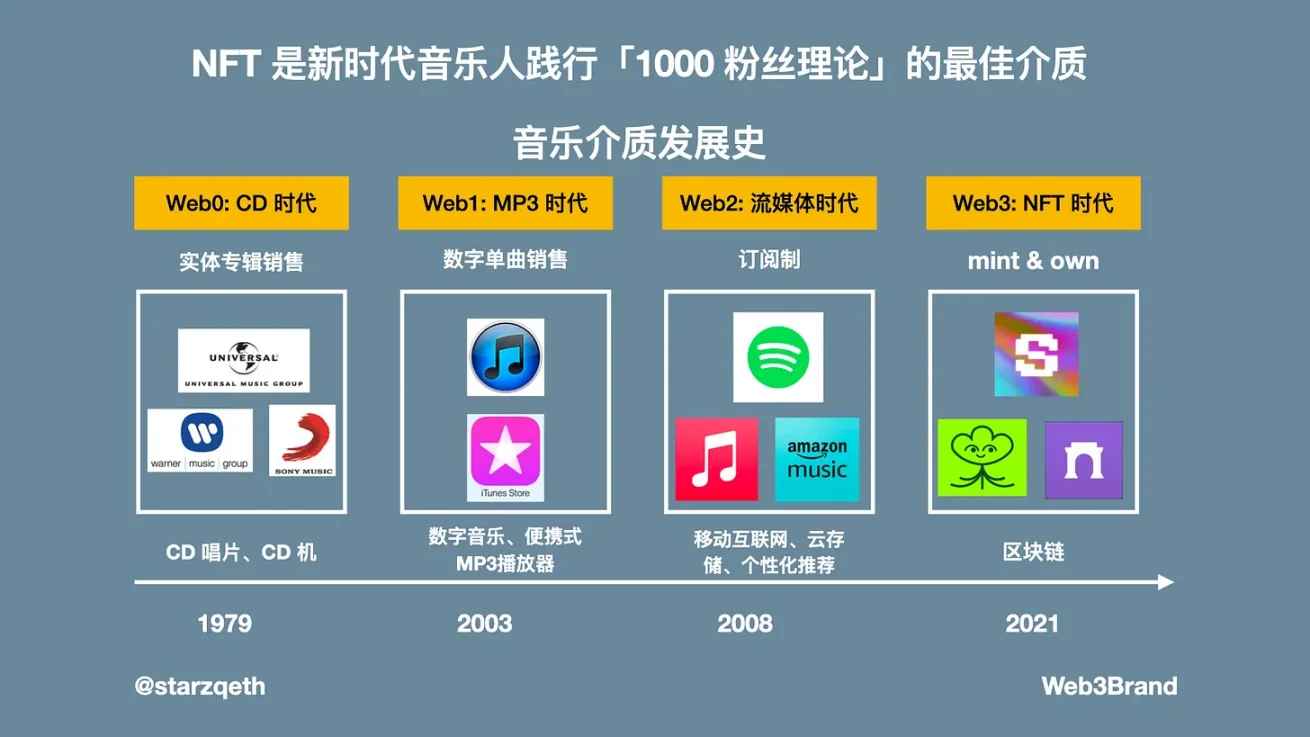
TL;DR
- Problem: Only 0.4% of musicians can earn $50,000 a year through streaming media
- Tracing back to the origin: Digital music started with single mode, and the subscription model of streaming media brought prosperity to the platform, but it is not friendly to independent musicians in the long tail
- 2003: iTunes Store pioneered single sales model
- 2008: Spotify pioneered streaming media subscription model
- Impact of streaming media subscription model on musicians: It's difficult to make money and has brought a "toxic culture"
- Independent musicians are not suitable for streaming media and need new methods
- Independent musicians in the new era: Practicing the "1000 Fans Theory" with NFT
- Summary: Web3 is a new era for individual brands
1. Problem: Only 0.4% of musicians can earn $50,000 a year through streaming media
In 2022, streaming media accounted for 67% of global (recorded) music revenue. In other words, for a long-tail musician who relies on recordings, the vast majority of their income comes from streaming media platforms such as Spotify. However, the problem is that only 0.4% of musicians can earn over $50,000 a year through streaming media.
According to estimates from the UK Intellectual Property Office, only about 0.4% of musicians on streaming media platforms (1,723 musicians) can obtain enough streaming volume (100 million plays per month) from music creation to sustain a livelihood.
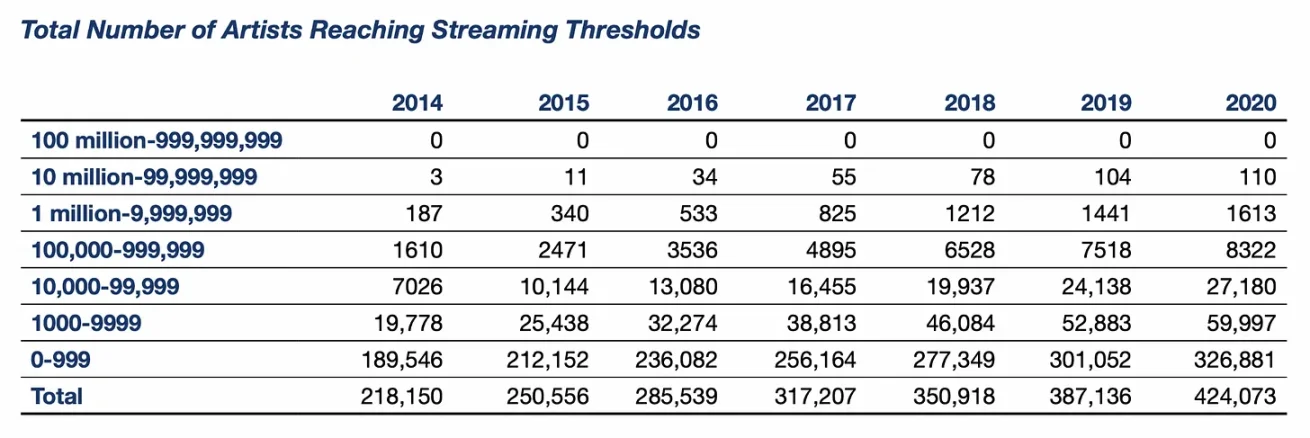
The fees that streaming media platforms pay to musicians are usually between $0.003 and $0.005 per play. Using an average of $0.004, the income corresponding to 1 million plays per month is $4,000, which amounts to $50,000 a year.
$50,000 is exactly the median level of personal annual income in the UK and the US, meaning it can provide a middle-class life.
According to data from the US Bureau of Labor Statistics, the median personal annual income in the US in 2021 was $45,792. This means that half of the personal income in the US is higher than $45,792, and the other half is lower than $45,792.
By the way, in 2021, the median personal annual income in New York State was $63,172, and in California it was $72,848. This means that if you want to live in New York State or California, $50,000 is not enough, and you need a higher income.
In summary, in the era of streaming media, only a very small proportion (0.4%) of musicians can earn $50,000 a year and live a middle-class life. This is clearly not a healthy ecosystem.
How did this result come about, what are the reasons behind it, and what are the opportunities for breakthroughs? Please continue reading.
2. Tracing back to the origin: Digital music started with single mode, and the subscription model of streaming media brought prosperity to the platform, but it is not friendly to independent musicians in the long tail
2.1 2003: iTunes Store pioneered single sales model
Digital music did not start with the subscription model of streaming media, but with the single sales model.
On April 23, 2003, Apple launched the first digital single on the iTunes Store, which was U2's "Vertigo." This song was priced at $1.29 and sold over 100,000 copies within 24 hours, setting a record for digital music sales at the time.
Digital singles were cheaper and more flexible than traditional music formats (such as CDs). The launch of the iTunes Store marked a major turning point in digital music sales and helped propel digital music into the mainstream.
The change in the music business model was driven by changes in how users consume music. The increase in the quantity of music and the emergence of digital music formats (mp3, aac) allowed users to listen to thousands of songs on their computers, but they could only listen to 10 songs from a CD in a mobile scenario. Apple launched the first iPod on October 23, 2001, with a capacity of 5GB, which could store about 1,000 songs, meeting users' needs to listen to music anytime, anywhere. It also released a series of ads with the theme "a thousand songs in your pocket," conveying the core concept of the iPod.
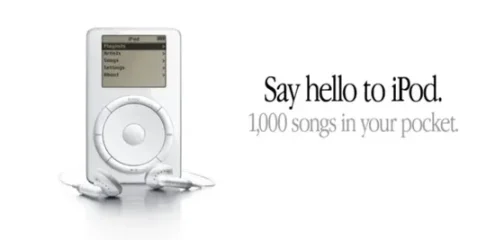
The iPod could indeed hold 1,000 songs, but the process of importing 1,000 songs from a CD was actually quite painful (I have experienced it myself), requiring the following 6 steps to be repeated:
- Insert the CD into the CD drive.
- Open iTunes, click the "Music" tab in the iTunes window.
- In the "Music" window, click "Import CD" under the CD to be imported.
- In the "Import CD" dialog box, select the songs to be imported and click "Import."
- Wait for the import to complete, and the songs will be saved in the iTunes library.
- Drag and drop the songs from iTunes to the music library on the iPod to complete the import.
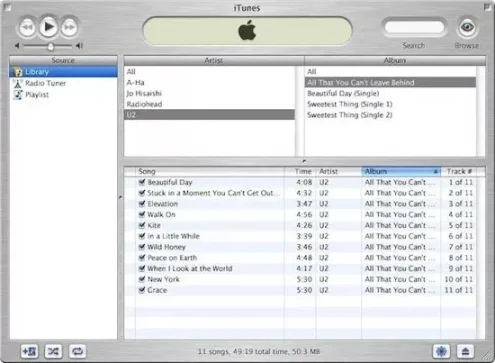
After the launch of digital single sales on the iTunes Store, it made user purchases more flexible (CD to single), and made it more convenient to import to the iPod (purchased singles were already in the iTunes library and could be directly dragged and dropped to the iPod).
The combination of iPod and iTunes Store completely changed the way people consume music in 2003.
2.2 2008: Spotify pioneered streaming media subscription model
The digital single sales model made it easier for users to carry music in their pockets, but it also faced three practical problems:
- If you want to listen to a lot of music (like 1,000 songs), buying singles would be a significant expense.
- Each device for listening to music has management costs. For example, if you get a new phone, you need to re-import the songs.
- You need to manage playlists yourself, which is also a hidden cost. However, in reality, most music listening scenarios are incidental and aimless, and do not require creating playlists.
As the number of online music and the diversity of user music tastes increased (25 times from 2003 to 2008), these pain points became more prominent.
For musicians, if their goal is to become popular and reach a large audience (hit big), each single needs to be paid for, which became a hidden threshold.
Around 2005-2010, internet service providers began to offer high-speed broadband services from 10 Mbps to 100 Mbps, and cloud storage technology began to emerge, making audio and video streaming services possible.
- February 14, 2005: YouTube was founded.
- March 14, 2006: Amazon launched Amazon Web Services (AWS) cloud storage service.
In this context, Spotify launched in 2008 in Europe with a combination of "free" and "paid subscription," pioneering the streaming media subscription model.
- Free: Free users can play music online without restrictions, but will hear ads between songs. In addition, free users cannot freely select songs on mobile devices and can only listen to music in shuffle mode.
- Paid: For users who subscribe and pay monthly (€10/month), Spotify provides ad-free, high-quality audio streaming, offline playback, and the ability to freely select songs on any device.
It can be seen that Spotify allows users to "access a large amount of music anytime, anywhere on any device" at "relatively lower costs" and "enjoy personalized recommendation services"; at the same time, it allows musicians to reach a larger audience. Based on the following set of numbers, the streaming media model represented by Spotify can reach over 100 times more users than the single model represented by iTunes.
- Best-selling single on iTunes: Michael Jackson's "Billie Jean." This song was released in 1983 and sold over 10 million copies on iTunes.
- Most popular single on Spotify: Drake's "One Dance." This song was released in 2016 and played over 2 billion times on Spotify.
In 2011, Spotify entered the United States and began a rapid growth path with the help of smartphones and mobile internet. As of April 2023, Spotify has over 420 million subscribers in more than 180 countries and regions (accounting for 74% of global digital music subscription users). Among them, 172 million users are paying subscribers, and 248 million users are free users.
Spotify's successful model has also led to imitation by other companies. Apple launched Apple Music in 2015, and Amazon launched Amazon Music in 2016. Meanwhile, streaming music has been steadily climbing to become the dominant source of revenue in the music product industry.
- In the early 2010s, digital sales of singles and albums (e.g., through iTunes) still held a significant share.
- In 2016, streaming revenue in the US music industry surpassed digital download revenue for the first time.
- By 2018, streaming music revenue accounted for 75% of the entire recorded music market revenue.
2.3 Impact of Streaming Media Subscription Model on Musicians: Difficulty in Earning Money and the Emergence of a "Toxic Culture"
The streaming media subscription model better meets the diverse listening needs of users and has made Spotify the world's largest music streaming platform with a market value of $220 billion. However, it has also brought about the problem mentioned at the beginning of the article: only a very small proportion (0.4%) of musicians can earn $50,000 a year and live a middle-class life.
In fact, the problems brought about by streaming media go beyond this:
- The streaming media subscription model has almost reached the ceiling in terms of user numbers and revenue. The income from 100,000 plays is decreasing, making it increasingly difficult for musicians to earn $50,000.
- 66% of streaming media consumption comes from old songs (released for over 18 months), making it difficult for new musicians to break through.
- Musicians are no longer creating for their audience, but catering to recommendation engines, pursuing scale over quality.
- Platforms act as "middlemen," and users belong to the platform, unable to directly contact musicians.
I will continue with the translation in the next message.
- NFT itself is the work, a digital CD or a digital single; at the same time, NFT restores the asset properties of a CD, and if an independent musician becomes famous in the future, there is room for appreciation.
- NFT can realize a series of fan rights based on token gating and open loyalty, such as verifying NFT to enter the musician's community, priority ticket purchase rights, and anti-scalping measures. Specific cases can be referenced in the A7X band's use of NFT to connect fans and distribute rights.
- NFT itself is also a public social identity in the digital world. In Web2 streaming platforms, only Spotify and QQ know that you are a fan of a certain musician, but everyone can know that you own an NFT of a certain musician.
- NFT has a low issuance threshold, which is a significant advantage. In the Web0 era, fans could also buy signed CDs, signed books to support independent creators, but there were still significant barriers to issuance. NFT has almost reduced this barrier to zero (it is expected to increase later, but it is definitely lower than physical costs).
This is also why independent musicians are actively embracing Web3.
Los Angeles singer-songwriter TK: In November 2022, he released his first on-chain album "Eternal Garden" at a price of 0.07 ETH (about $70) and sold 700 copies, earning 38.26 ETH (about $70,000). It is estimated that TK can only earn $500 to $1,000 in streaming royalties from Spotify each month, so the profit he made from this NFT sale is equivalent to 70 months of streaming income.
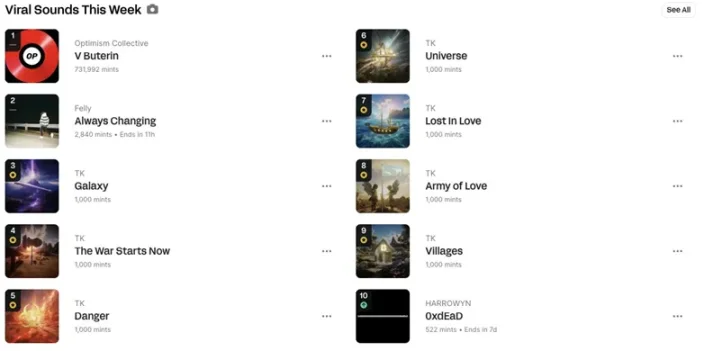
Italian musician Violetta Zironi: In April 2022, she released the "Moonshot" music NFT collection based on her 5 songs and 2500 unique hand-drawn artworks by her father Giuseppe Zironi, selling 2500 copies at a unit price of 0.045 ETH, earning 112.5 ETH (about $20,000). Inspired by this, in January 2023, she released another music NFT collection called "Another Life" based on 5 songs, selling 5200 copies at a unit price of 0.1 ETH, earning 520 ETH (about $100,000). She is also the first musician to break the 5000 sales mark for a single music NFT.
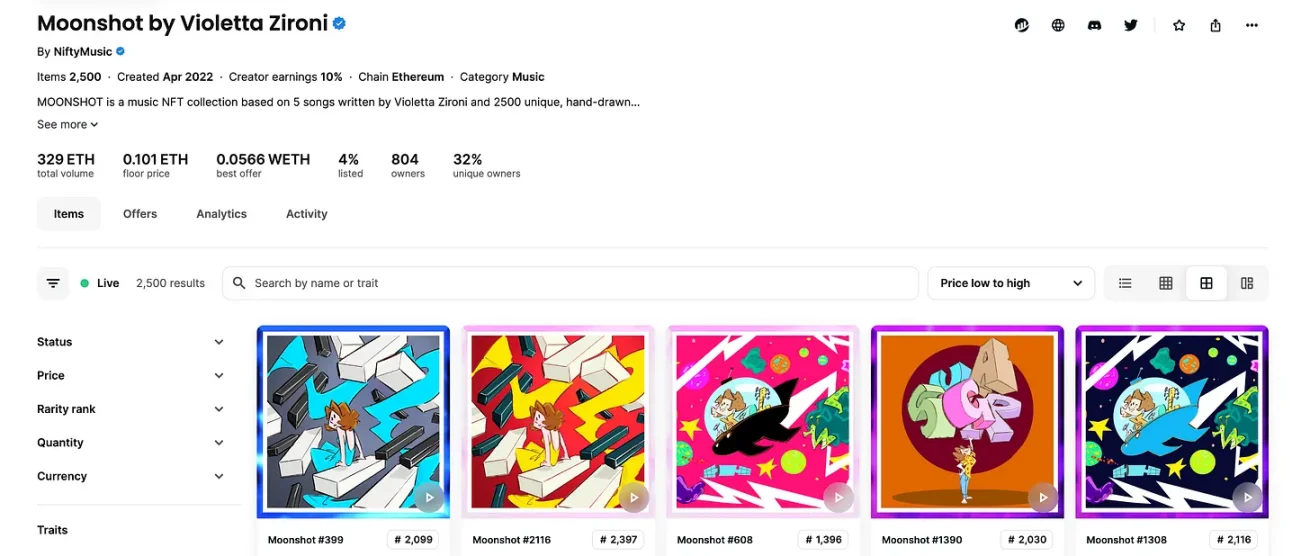
It is worth mentioning that the success of Violetta and TK is built on their community and fans (thanks to Henry for the output).
- Violetta has 66,000 Twitter followers and a very high interaction rate, and at one point claimed to be live for 20 hours a day.
- TK spent years building his Web3 community, and his Telegram group is one of the most active in the music industry.
In my opinion, for creators, NFT combines "work" and "fan rewards" into a "culture-based fan reward," something that is difficult to achieve in Web2.
- For example, being a beautiful female anchor also relies on fan relationships to make money, and a top fan can spend up to $100,000, but it lacks a bit of cultural flavor.
- In comparison, fans naturally support creators by buying NFTs, and NFTs also include "work + fan rights + social identity," giving them more utility.
- In our reader community, there are also users who shared that after reading a certain author's physical book, they purchased an NFT-based e-book to support the author.
So, the ability model for independent musicians in the new era becomes not only about creative ability but also about having a certain community operation ability. In the Mastercard Music Program we previously introduced, AI and Web3 empower these two abilities:
- Students can create works faster through AI.
- After graduation, Mastercard helps students release single NFTs to build a community.
I will continue to pay attention to Web3 music-related communities, including Lens and Farcaster.
By the way, I believe that the "1000 true fans theory" and the streaming media subscription model are not in conflict. If you are an independent musician and want to earn $50,000 to $100,000 a year to live a relatively free life, the "1000 true fans theory" is more suitable for you. If you want to become a globally renowned star, Spotify/TikTok/YouTube are your best tools.
- Web3 is a new era for individual brands
Writing up to this point, I have to admire Kevin Kelly's foresight. In 2008, when Spotify was just launched, KK wrote the article "1000 True Fans." He wrote this article because at the time, people generally believed that the goal of success was to become famous and hit it big, but technology allowed us to have another choice.
However, the subsequent story is that under the mobile internet, super-scale platforms emerged, and the user dividend made "scale" not difficult. Creators didn't care so much about the intermediaries' share and whether fans/customers belonged to them.
Until the past 2 years, people have started to value "fans" again, and this is behind three narratives:
- The user dividend has disappeared, platform shares are increasing and lack transparency, and both brand and individual creators want to connect directly with fans.
- When a user pays $100 on Spotify, the musician can actually receive a minimum of $10, with a complex industry structure and profit chain in between.
- Fans collectively create value but cannot capture its value.
- The emergence of digital nomads and solopreneurs. In their value system, freedom is more important than getting rich, and "making a living through fans" has opened a door for them.
Web3, decentralization, and communities happen to meet these three narratives, allowing individual creators to bypass intermediaries and earn income from fans and communities; as fans, they also have their own identity and assets, and through community co-construction, they appreciate, forming a healthier ecosystem.
Reference
- How Difficult Is It to Make a Sustainable Living from Streaming?
- Starter Pack: Music Streaming Platform Models
- Building a Fan Economy with Fan-Powered Royalties
- A Thousand True Fans
- A7X Band Connects Fans and Distributes Rights through NFT
- SeeMusic | #17 Singer-Songwriter TK Sells 7000 New Album NFTs in 48 Hours
- How the Music Industry Combines with Web3
- Web3 + AI Empowers Personal Brands: Mastercard Artist Accelerator and Copyright Challenges in the AI Era
免责声明:本文章仅代表作者个人观点,不代表本平台的立场和观点。本文章仅供信息分享,不构成对任何人的任何投资建议。用户与作者之间的任何争议,与本平台无关。如网页中刊载的文章或图片涉及侵权,请提供相关的权利证明和身份证明发送邮件到support@aicoin.com,本平台相关工作人员将会进行核查。




